Contents
1. Electronics Prototype Boards
1.1 What is an electronics prototype board?
In simplest terms, you use electronic prototype boards to test your project in its early stages.
These boards can have a mesh of tiny holes to which electronic components can be affixed. Depending on the type of board, these components can be attached with or without solder.
Hence, we can say that electronics prototype boards are for temporary testing and construction of electronic circuits.
You will find it more appropriate to develop your design on a prototyping board.
1.2 What options are available in the market?
Currently, in the market, you will come across a breadboard, stripboard, and perfboard.
The following subsections are for these types of electronic prototype boards.
1.2.1 What is a breadboard?
A breadboard serves as a structural base for testing your electronics.
It is mostly made of white plastic and doesn’t need solder to attach the components, so this board type can be re-utilized. Figure 1 shows a typical breadboard.
You can use it for various projects varying from simple to high level digital or analog circuits. That is not it; central processing units (CPUs) can also be prototyped using these boards.
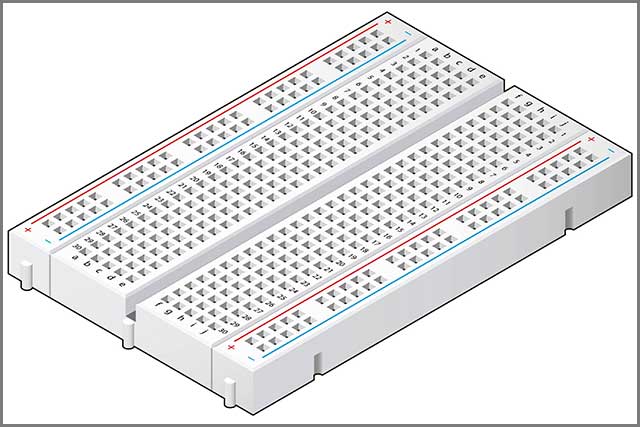
Figure 1 A typical breadboard that is quite common among students
1.2.2 What is a Stripboard?
A stripboard is a type of electronics prototype board that has a 0.1-inch rectangular network of holes.
It also has extensive analogous copper strips arranged in one direction on one of its sides.
Moreover, they are also known as Veroboards. Figure 2 illustrates the components soldered on a Veroboard.

Figure 2 Electronics components soldered on Veroboard.
1.2.3 What is a Perfboard?
A perfboard is a stiff, thin sheet with holes bored regularly on a grid.
The grid is mostly squared, with holes spaced 0.1 inches apart. Square copper pads cover these holes, but plain boards also exist.
You will need to use solder to attach your components. Figure 3 demonstrates a Perfboard.
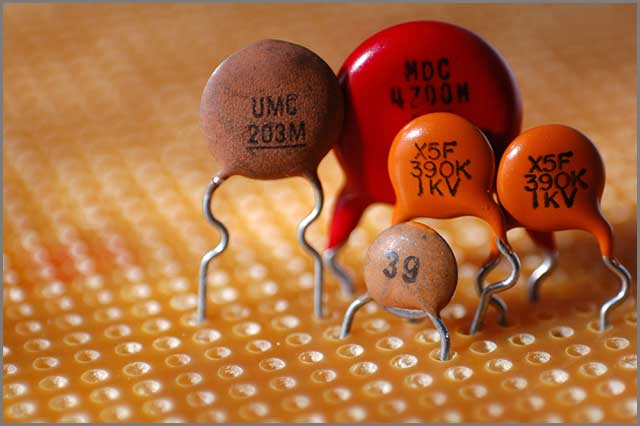
Figure 3 Capacitors placed on a Perfboard
In this section, we discussed the basic definition and different types of electronic prototype boards.
In the next one, we will explain how to use them.
2. How to Use Them?
2.1 Breadboard
You can easily place your electronic components into the breadboard’s holes for prototyping purposes.
There is no need to use any specific tools for using the solderless breadboard.
However, if your electronic components are too small, you may need to use tweezers or pliers to pick and place them.
Some breadboards have labels over them to make them easy to use for the first time.
In Figure 4, you can observe that there are two strips of holes lying in between the “+” and “-” labels. Further, the central columns of holes are labeled as “a, b, c, d, e” and “f, g, h, i, j.”
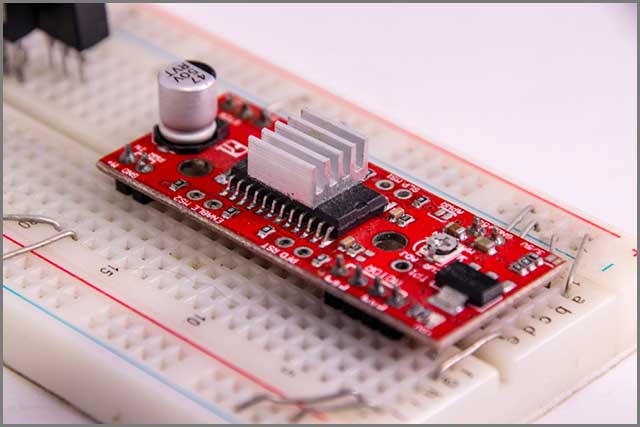
Remember that every row of five holes (a-e or f-j) is electronically connected.
There are no electrical connections present between the holes of any half-row with any other half-row holes.
For instance, f1 is connected to g1, h1, i1, j1, but not to a1, b1, f2, g4, h2, etc.
The two hole strips running between “+” and “-” have an electrical connection throughout each column strip.
You can use them to provide power and ground connections to your electronics circuit.
2.2 Stripboard/ Veroboard
You would need to place the components on the copper-free side of the board.
You would observe that their legs would be coming out of holes on the other side of the board.
This site has copper tracks, so you will solder these legs on this site to make the required connections.
2.3 Perfboard
Before developing the circuit on a perf board, You should plan your project’s connections and locations.
PCB layout software or similar ones are for such planning. Moreover, it would help if you also kept in mind your surfboard’s spacing while designing the layout.
After that, you would need to solder the components at their places and make any required electrical connections.
To avoid excessive wires, you can use the leads of components like resistors to make these connections.
However, you can use electrical cables on the copper side of the perfboard whenever needed.
In this section, we discussed using electronic prototype boards.
In the next section, we will discuss their advantages and disadvantages.
3. Advantages and Disadvantages of Electronics Prototyping Boards
3.1 Breadboard
3.1.1 Advantages
You can quickly make your circuit or make any changes.
It works perfectly with the dual in-line package (DIP) ICs.
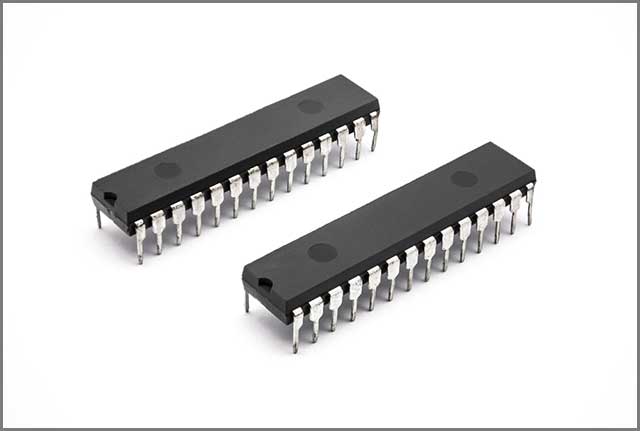
Figure 5 DIP ICs
3.1.2 Disadvantages
It offers only lab testing, so reliability is limited.
There is a high capacitance present between two rows.
They are limited to components with small legs.
3.2 Stripboard/ Veroboard
3.2.1 Advantages
You can easily make amendments to your circuit.
It can be used permanently.
Readily available in the market
Cheaper than printed circuit boards (PCBs).
3.2.2 Disadvantages
Here again, you will get limited reliability.
The circuit layout is large.
You need solder, which is not a problem if you are an expert.
3.3 Perfboard
3.3.1 Advantages
If you solder the circuit well, you will get reliability.
It can be used permanently.
Quite cheap.
Work with almost all sizes of components.
You will feel comfortable while using the discrete components.
3.3.2 Disadvantages
It consumes time.
You need to have expertise.
You may find it hard to use it with ICs.
In this section, we discussed the advantages and disadvantages of electronic prototype boards. In the next chapter, we will tell you about the common mistakes that you may make while using them.
4. Common Mistakes While Using Prototype Boards
Well, as a beginner, you will make inevitable mistakes while making connections on electronics prototype boards.
This section will ensure that you do not make them. Keep on reading.
You may make the following mistakes while using a Breadboard, Veroboard, and Perfboard:
You can get the row numbers wrong while using a breadboard. So, if your circuit is not working, you should check if you have wrongly placed any component.
While using breadboards, you can also confirm which column strip was set to provide power and which was set to ground. So, don’t mix them up.
It is possible that you have not pushed the electronic components through the holes in the breadboard. So, try not to make any loose connections.
Some components may be placed in the wrong order on all prototype boards. Therefore, you should always check the polarities of your electronic components.
In Veroboards or perf boards, you may have wrongly soldered your components.
Or, you may have put too much solder that two connections are getting short-circuited, so if your circuit is not working instantly, double-check for soldering errors.
In surfboards, you can mix up the copper-free side with the copper side. So, look closely to identify each side of the board.
In Veroboards, you may start connecting your circuit without proper planning, leading to a faulty board.
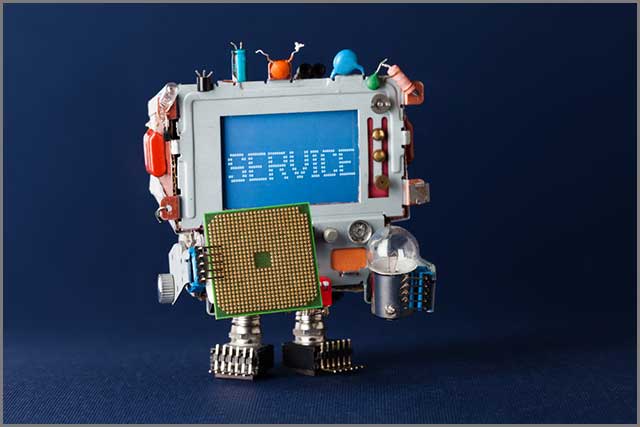
5. Get PCB Prototypes from WellPCB
If you are worried that the above-discussed prototype boards are not what you are looking for, and you want a board that isn’t restricted and can be used in any project or with any components, then you are in luck.
We have the right prototype board for you.
A universal electronics prototype board—the printed circuit board (PCB)—is available in the market.
All you need to do is make a PCB layout of your circuit diagram and send it to a company for making a prototype.
Luckily, you can get PCB prototypes from WellPCB at very cheap rates. That will save you time and money.
WellPCB also offers various promotions and services for its valuable customers.
You can visit their website here to know more.

Conclusion
This article discussed electronic prototype boards, which can quickly build and check your circuit.
All you need is a reliable, cheap, and working prototype board that works for all component sizes.
We discussed the different types of these boards and their advantages and disadvantages to make it easy for you to select a board that fulfills your requirements.
Now, you can prototype your electronic circuit in real time.
Still, if you have any questions, please contact us anytime.
We are always ready to help you with any queries.





